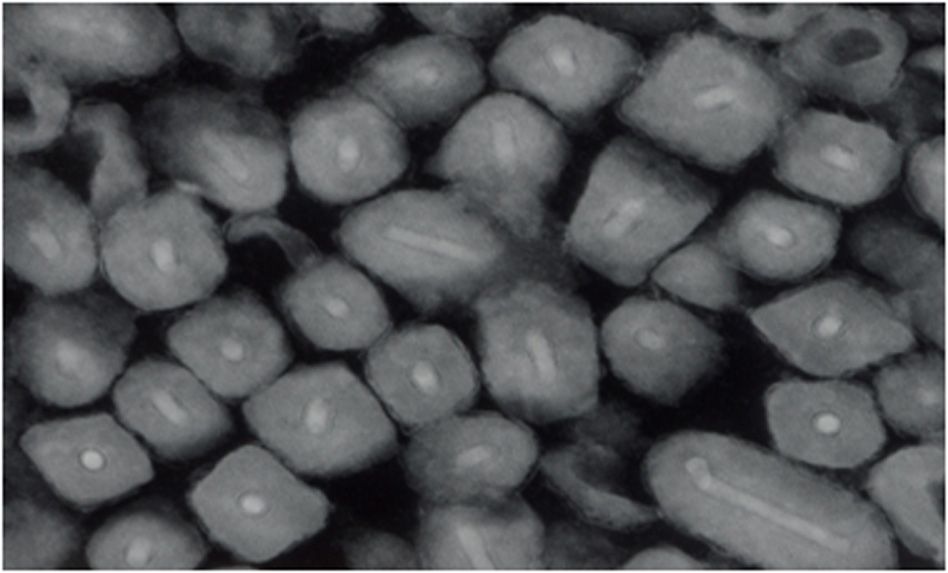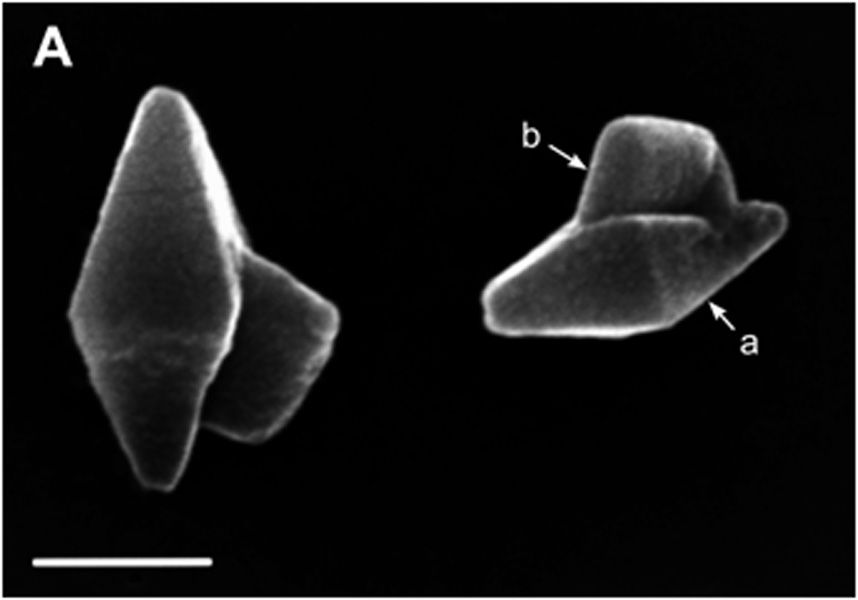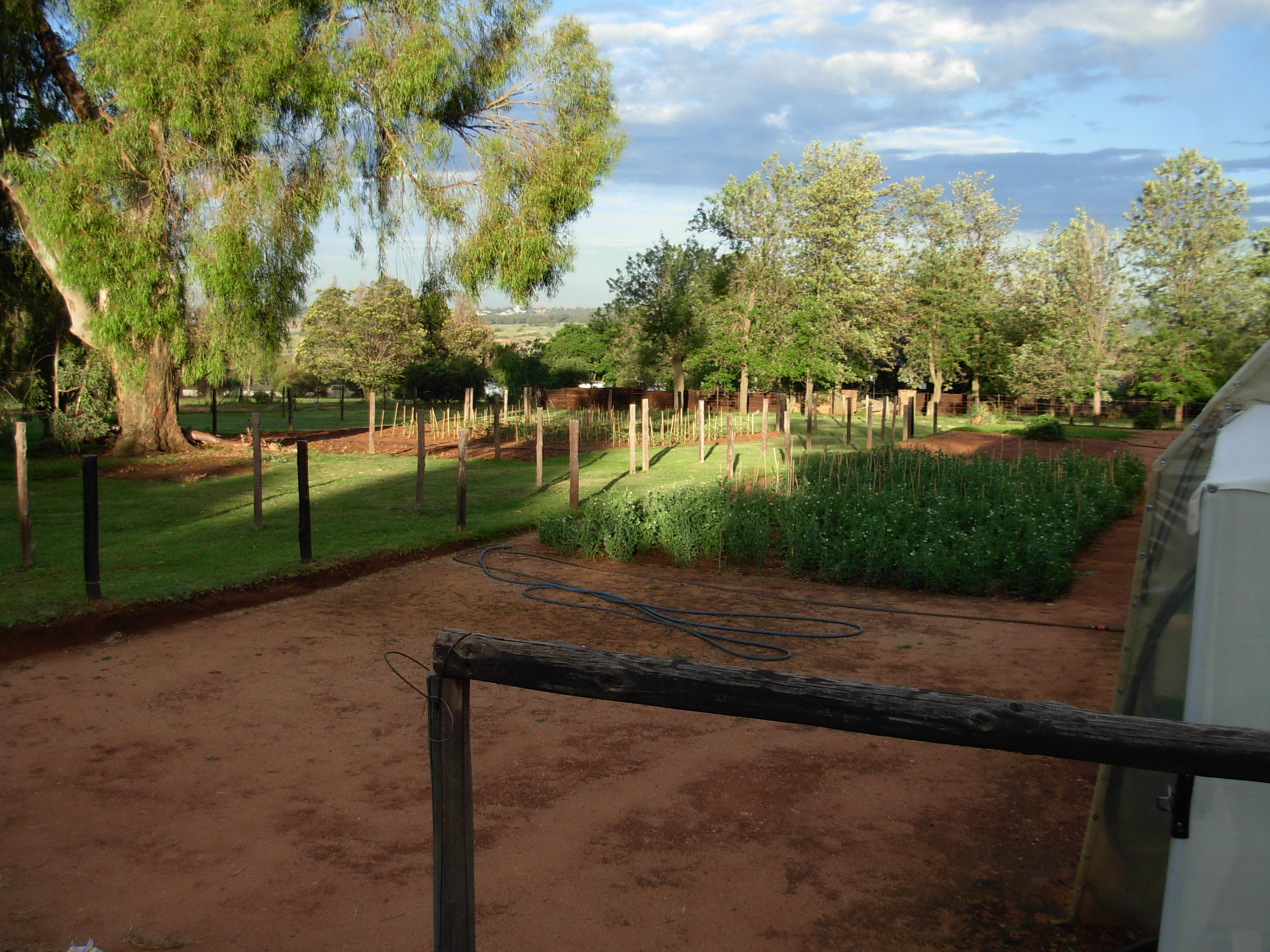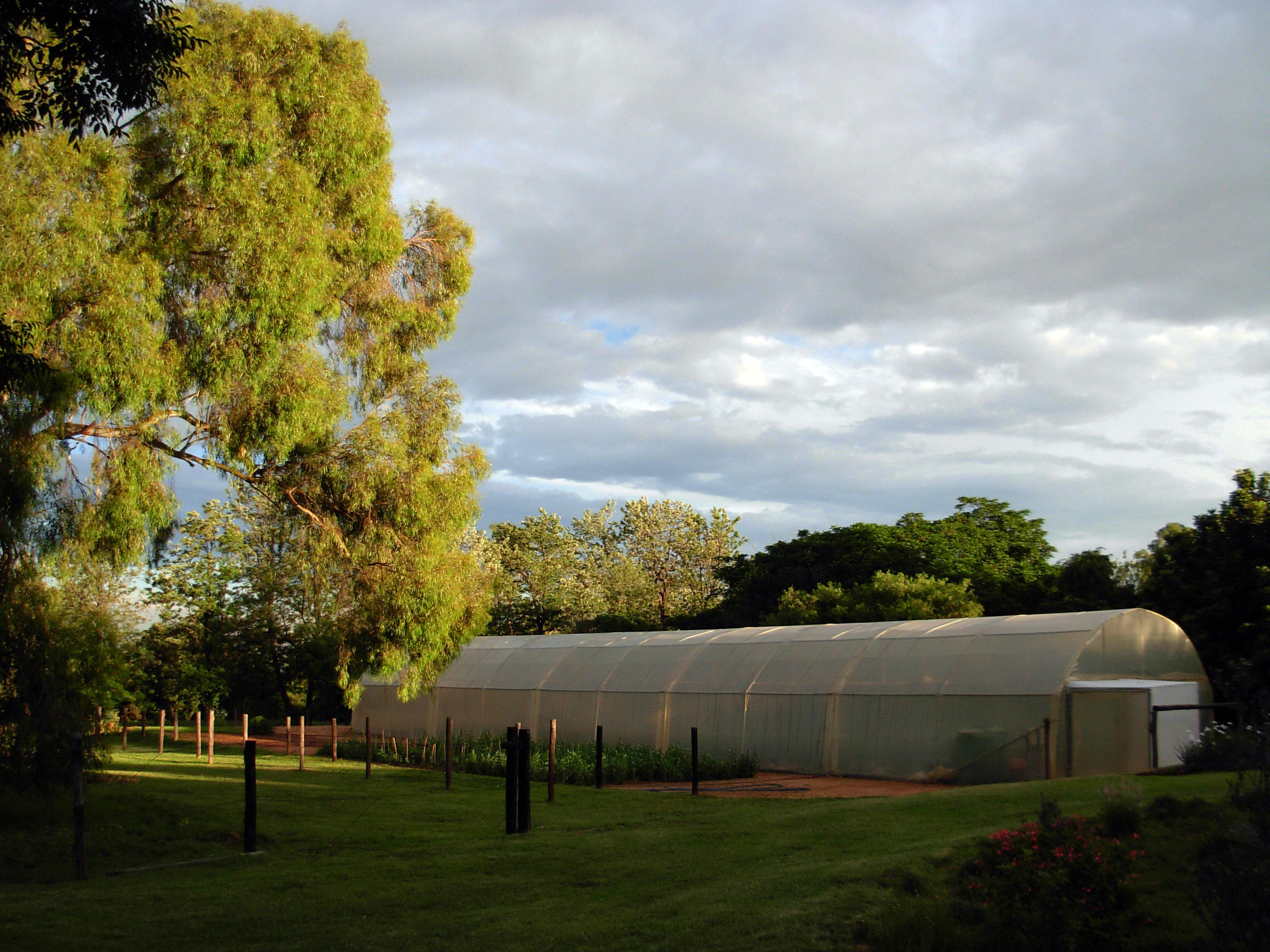| Invertebrate Pathology and Biocontrol Laboratory  Principal Investigator Principal Investigator
Prof. Gustav Bouwer is the Principal Investigator in the Invertebrate Pathology and Biocontrol Laboratory (IPBL) in the School of Molecular and Cell Biology. He obtained his B.Sc., B.Sc. (Hons), and Ph.D. in Microbiology & Biotechnology from the University of the Witswatersrand. In 2008, the Wits Business School conferred a Masters in Business Administration (MBA) degree to Prof. Bouwer. He is Chairperson: Genetically Modified Organism (GMO) Advisory Committee, thus appointed by the Minister of the Department of Agriculture, Forestry and Fisheries, and he is a member of the National Executive Council for GMOs. His research programme focuses on agricultural and environmental biotechnology and biological control. To date, his research programme has produced two patents. He is project leader of four large projects involving many millions of ZAR, while contract research has been done for several major clients. His current research projects focus on different aspects of the bacterium Bacillus thuringiensis, insect-infecting baculoviruses, plant compounds with pest control activity, and the development of biopesticides for the control of plant pests and disease vectors such as mosquitoes. Molecular biology is an integral part of several of the research thrusts. Contact details: Prof. Gustav Bouwer
School of Molecular and Cell Biology
University of the Witwatersrand
Private Bag 3
Wits, 2050
South Africa Tel: +27 11 717 6329
Fax: +27 11 717 6337
E-mail: gustav.bouwer@wits.ac.za Research Projects Microbes that cause the death of insects are called insect pathogens. The research of IPBL focuses predominantly on how microbes can be used to control economically important insects that cause damage to crops or are disease vectors. IPBL performs research on two key groups of insect pathogens: bacteria and viruses. The microbes IPBL uses cause the death of insect pests, but are harmless to non-target organisms, such as bees, birds and mammals. This means that these microbes can be used as safe, ecologically friendly pest control products. A major thrust of IPBL is to perform the research required to commercialise insect pathogenic viruses and bacteria for the control of economically important agricultural pests. This thrust focuses on the integration of manufacturing technologies to enable economical, commercial-scale production of microbes that have shown good insect control potential. IPBL also develop novel product formulations that improve the insect control abilities of insect pathogens. IPBL's research is responsive to the needs of farmers locally and abroad, as conventional chemical insecticides cause severe ecological pollution and annually poison thousands of small-scale farmers. By developing ecologically friendly alternatives, local farmers and farm workers benefit by having the choice of using effective, cost-competitive insect control products that are not toxic to humans or other non-target organisms. Due to their ecological friendliness, the pest control products that IPBL is developing will help to protect South Africa's biodiversity and encourage sustainable development. IPBL has several active research projects, including the projects outlined below.
- The evaluation of insect pathogens and novel botanical compounds for the control of southern African malaria vectors
There are an estimated 300-500 million cases of malaria and over one million associated deaths reported each year, mostly in young children in sub-Saharan Africa. Malaria is vectored by certain species of mosquitoes. With a view to contributing to the reduction of malaria cases in Africa, we have research projects that are evaluating the use of insect pathogens and novel botanical compounds for the control of African mosquitoes. We are also evaluating ecologically friendly, genetically engineered bacteria for improved mosquito control. Recently we started using nanotechnology to improve delivery of water-insoluble insecticidal compounds. Since assessment of the environmental risks of a novel biopesticide is necessary before its application in the field, we have developed standardised aquatic microcosms to evaluate the target and non-target effects of biopesticides.
- Genotypic variation of South African baculoviruses
Baculoviruses are a large group of insect-specific, DNA viruses that are currently being studied and utilised as biopesticides for some of the most economically important pests. It is well documented that there is a high degree of both intra- and interspecies genetic variation within the baculovirus family; however, little is known about the true spectrum of variation or the key drivers of variation in baculoviruses. An understanding of this variation would allow for a greater insight into virus ecology, epidemiology and virus-host interactions as well as possibly aid in the understanding of the genetic variation seen in other economically important insect pathogens. IPBL uses a novel, in-house developed technique that has provided significant insight into the genotypic diversity of baculoviruses.
- Research and development of biological control agents for commercial use in bio-intensive pest control programmes
We are developing baculoviruses for the control of a range of insect pests on horticultural crops, such as tomatoes and citrus. The general objectives of the initiative are to research and develop biocontrol products that are: cost-competitive substitutes to conventional chemical insecticides; have similar efficacy and potency to conventional chemical insecticides; are easy-to-use; and environmentally friendly. In order to realise the above general objectives this initiative has the following set of specific objectives:
- Product development: Research and development of indigenous biological control agents, such as baculoviruses, into biocontrol agents for the control of insect pests.
- Production process development: Research and development of fermentation/bioreactor technologies and mass-rearing technologies for the cost-effective production of high yields of biocontrol agents.
- Product formulation development: Research and development of product formulation technologies.
- Field application of products: Research and development of product application technologies.
- Field efficacy of products: Product evaluation in field trials.
The initiative aims to develop commercially-ready biological control agents for the control of economically important agricultural pests and disease vectors in integrated pest management programmes.
In the case of baculoviruses, some of the key results to date have been:
- The isolation and characterisation of new baculoviruses (granulovirus and nucleopolyhedrovirus), some of which are extremely virulent.
- Determination of the susceptibility of target insects to the baculoviruses.
- Concentration-mortality assays performed on field-collected neonate larvae showed that there was a significant difference in the susceptibility of insect larvae of different geographical origin.
- Molecular characterisation proved that each new baculovirus isolate was a distinct genotypic variant.
- The development of mass rearing techniques and technology.
- The development of a high-quality, cost-effective diets for rearing the insects specifically for virus production.
- The optimisation of baculovirus yields by using multi-factorial designs and monitoring several key responses.
- The determination of microorganisms associated with extracted virus and the effect of storage on microbial load.
- The development and testing of novel baculovirus formulations, including suspension concentrates and wettable powder formulations.
- The confirmation of the efficacy of the product in several greenhouse and field trials on a range of crops.

- Development of Bacillus thuringiensis-based biopesticides for the control of lepidopteran pests
The objective of the project is to develop biopesticides based on the soil bacterium Bacillus thuringiensis (Bt). Specific aims include the isolation and characterisation of new Bt strains, the construction of genetically modified Bt strains with increased toxicity, and the optimisation of liquid fermentation of Bt strains. Some key research outcomes (to date): Several new Bt strains were isolated from the environment. After screening the isolates for toxicity, the strain with the best larvicidal activity was selected for additional studies. Multi-factorial experiments have been performed to develop a cost-effective base medium for production of Bt strains by fermentation. The experimentally-optimised formulation resulted in good Bt spore and biomass yields in a 7.5 litre bioreactor. Considering the low cost of the ingredients in the developed medium, the medium was considered ideal as the basis for further optimisation for subsequent use in commercial production. Studies have been performed to compare the growth kinetics and productivity (spore yields and biomass) of the best Bt strain to other Bt strains. The susceptibilities of two of the most important pests in South Africa, the African bollworm (Helicoverpa armigera) and the False Codling Moth (Thaumatotibia leucotreta), to Bt Cry proteins were investigated and local benchmarks for Bt Cry protein toxicity to these pests have been established. The most toxic Cry proteins were identified and formed the basis of subsequent recombinant research. Recombinant DNA techniques make it possible to significantly improve the efficacy (insecticidal activity) of the Bt strains currently used as biopesticides. The focus of this part of the project has been primarily on constructing new genetically engineered Bt strains that have optimised larvicidal activity against key target insect pests. Many aspects have been investigated, including: how to select the best insecticidal gene or a combination of genes for cloning; how to increase the production of insecticidal proteins without having a negative effect on the growth rate of the Bt host; and how to introduce and maintain cloned insecticidal genes in the Bt host by a stable and efficient transfer system. Several unique Bt-Escherichia coli shuttle vectors have been developed. An integral part of the vector strategy is the incorporation of transposon components, which facilitate recombination in compatible Bt strains and allow the in vivo removal of antibiotic marker genes. The recombination-enabled vectors thus allow the construction of antibiotic marker-free recombinant Bt strains. In order to improve expression of cry genes in recombinant strains, the effect of different promoters and ancillary proteins on Cry production has been evaluated in detail. Field trials of novel formulations of the Bt strain with the best larvicidal activity has resulted in excellent control of economically important insect pests.
 Some interesting completed projects include: Some interesting completed projects include:
- Studies on polydnaviruses in South African endoparasitic wasps.
- Evaluation of Bacillus thuringiensis and baculoviruses as potential control agents of Eldana saccharina Walker (Lepidoptera: Pyralidae).
- The isolation and characterisation of endophytic bacteria from plants and their use in biological control programmes.
- Development of in vitro assays for high throughput screening of the mammalian toxicity of botanical pesticides.
- Improved assays for the detection of Bacillus thuringiensis β-exotoxin.
- Characterisation of the cellular immune response of sugarcane borer (Eldana saccharina) larvae.
- Evaluation of the sublethal effects of baculoviruses on insects.
Recent Publications 1. Baillie, V. L. and Bouwer, G. 2013. The effect of inoculum dose on the genetic diversity detected within Helicoverpa armigera nucleopolyhedrovirus populations. In press; Journal of General Virology 94: xxx-xxx. 2. Ketseoglou, I. and Bouwer, G. 2013. Optimization of photobioreactor growth conditions for a cyanobacterium expressing mosquitocidal Bacillus thuringiensis Cry proteins. Journal of Biotechnology 167: 64-71. http://dx.doi.org/10.1016/j.jbiotec.2013.05.012 3. Byrne, M. J., Watkins B., Bouwer, G. 2013. Do dung beetle larvae need microbial symbionts from their parents to feed on dung? Ecological Entomology 38: 250-257. http://dx.doi.org/10.1111/een.12011 4. Rapulana, T. and Bouwer, G. 2013. Toxicity to Eldana saccharina of a recombinant Gluconacetobacter diazotrophicus strain carrying a truncated Bacillus thuringiensis cry1Ac gene. African Journal of Microbiology Research 7: 1207-1214. http://www.academicjournals.org/AJMR 5. Ketseoglou, I. and Bouwer, G. 2012. The susceptibility of five African Anopheles species to Anabaena PCC 7120 expressing Bacillus thuringiensis subsp. israelensis mosquitocidal cry genes. Parasites & Vectors 5:220.http://dx.doi.org/10.1186/1756-3305-5-220 6. Baillie, V. L. and Bouwer, G. 2012. High levels of genetic variation within Helicoverpa armigera nucleopolyhedrovirus populations in individual host insects. Archives of Virology 157: 2281-2289. http://dx.doi.org/10.1007/s00705-012-1416-6 7. Baillie, V. L. and Bouwer, G. 2012. High levels of genetic variation within core Helicoverpa armigera nucleopolyhedrovirus genes. Virus Genes 44:149-62. http://dx.doi.org/10.1007/s11262-011-0660-2 8. Hua, L. and Bouwer, G. 2012. The larvicidal activity of Bacillus thuringiensis Cry proteins against Thaumatotibia leucotreta (Lepidoptera: Tortricidae). Crop Protection 32: 47–53. http://dx.doi.org/10.1016/j.cropro.2011.09.019 9. Hua, L. and Bouwer, G. 2012. The toxicity of Bacillus thuringiensis Cry proteins to Helicoverpa armigera (Lepidoptera: Nocuidae) in South Africa. Journal of Invertebrate Pathology 109: 110-116. http://dx.doi.org/10.1016/j.jip.2011.10.005 10. Baillie, V. L. and Bouwer, G. 2011. Development of highly sensitive assays for detection of genetic variation in key Helicoverpa armigera nucleopolyhedrovirus genes. Journal of Virological Methods 178:179-185.http://dx.doi.org/10.1016/j.jviromet.2011.09.009 11. Ketseoglou, I., Koekemoer, L.L., Coetzee, M. and Bouwer, G. 2011. The larvicidal efficacy of Bacillus thuringiensis subsp. israelensis against five African Anopheles (Diptera: Culicidae) species. African Entomology 19: 146-150.http://hdl.handle.net/10520/EJC32880 12. Bouwer, G., Nardini, L. and Duncan, F. 2009. Helicoverpa armigera (Lepidoptera: Noctuidae) larvae that survive sublethal doses of nucleopolyhedrovirus exhibit high metabolic rates. Journal of Insect Physiology 55: 369-374. http://dx.doi.org/10.1016/j.jinsphys.2009.01.003 13. Grant, M. and Bouwer, G. 2009. Variation in the time-mortality responses of laboratory and field populations of Helicoverpa armigera infected with nucleopolyhedroviruses. Journal of Applied Entomology 133: 647-650. http://dx.doi.org/10.1111/j.1439-0418.2009.01428.x 14. Mac Innes, T. C. and Bouwer, G. 2009. An improved bioassay for the detection of Bacillus thuringiensis β-exotoxin. Journal of Invertebrate Pathology 101: 137-139. http://dx.doi.org/10.1016/j.jip.2009.03.007 15. Ketseoglou, I. and Bouwer, G. 2008. A simple technique for the preliminary screening of parasitic wasps for polydnavirus-like particles. African Entomology 16(2): 296-300. http://dx.doi.org/10.4001/1021-3589-16.2.296 Contract Research Prof. Bouwer has performed contract research for several major companies and is able to undertake highly productive and cost-effective contract research in the fields of bacteriology and agricultural and environmental biotechnology. Prof. Bouwer has more than 20 years of research experience, with 16 of those years as a research programme head. Prof. Bouwer is used to managing large research projects and multi-institution research consortiums. Prof. Bouwer’s laboratory specialises in the development of novel biopesticides for the control of crop pests and disease vectors. The laboratory has hosted projects that developed novel formulations of biopesticides. Because of its expertise and state-of-the-art equipment, the laboratory has the capacity to develop and test both liquid formulations and dry (wettable powder) formulations. Numerous insectaries enable the evaluation of insecticidal formulations against a range of insects under highly controlled and reproducible environmental conditions. The laboratory has the facilities and expertise to evaluate the effects of novel compounds, formulations or water samples on non-target invertebrates using standardized aquatic microcosms. This ability assists customers in the development of products that have limited non-target effects. The laboratory is able to perform accelerated storage experiments and to evaluate the UV-stability (using a climate controlled sunlight simulation cabinet) of bioactive compounds or formulations. IPBL is able to perform field and greenhouse trials (see photos below) to evaluate agronomic characteristics and to evaluate pesticides against a range of pests. The greenhouse may be rented for research projects. Prof. Bouwer can perform contract research in the following areas:
- Agricultural and environmental biotechnology.
- Bacteriology and microbiology, including water analyses.
- Biocontrol and biopesticide development.
- Integrated pest management.
Companies are encouraged to contact Prof. Bouwer to discuss contract research in the above, or other, areas. Consulting Services  Prof. Bouwer’s research experience includes microbiology, biotechnology, molecular biology, bioreactor optimisation, and industrial microbiology. Since he has substantial hands-on experience in several research areas, he has the ability to constructively engage and provide strategic leadership to a broad range of research teams and managers. With a Ph.D. in Microbiology & Biotechnology and a Masters in Business Administration (MBA), Prof. Bouwer has a combination of qualifications, skills and expertise that enables him to add significant value in a range of areas. Prof. Bouwer’s research experience includes microbiology, biotechnology, molecular biology, bioreactor optimisation, and industrial microbiology. Since he has substantial hands-on experience in several research areas, he has the ability to constructively engage and provide strategic leadership to a broad range of research teams and managers. With a Ph.D. in Microbiology & Biotechnology and a Masters in Business Administration (MBA), Prof. Bouwer has a combination of qualifications, skills and expertise that enables him to add significant value in a range of areas.
 Prof. Bouwer provides consulting services in the following areas: Prof. Bouwer provides consulting services in the following areas:
- Bacteriology and microbiology.
- Biocontrol, biopesticides and Integrated Pest Management.
- Agricultural and environmental biotechnology.
- Intellectual Property Management. Prof. Bouwer has extensive experience in negotiations and the development of R&D agreements between two or more parties. As project leader on several large (multi-institution) projects, Prof. Bouwer has strong negotiation skills and direct experience in the development of complex R&D agreements. Not only can Prof. Bouwer effectively deal with scientists and companies, but he has extensive experience in sorting-out agreements and contracts with legal advisors and lawyers. Prof. Bouwer has strong working knowledge and valuable experience in the development, protection, and commercial exploitation of R&D intellectual property.
- Genetically Modified Organisms (GMOs), including Environmental Risk Assessments (ERA) and regulations relating to GMOs. Prof. Bouwer has extensive experience in the field of GMOs and the associated regulations and ERA requirements.
- Market Research. Prof. Bouwer is able to provide guidance and perform market research in a range of markets using sophisticated statistical methods.
- Pricing Policy. Developing a pricing policy is a core marketing function that has a direct impact on sales and the profitability of a company. There are several different methods that may be used for pricing a product or service. Pricing methods that consider perceived value or the likely response of consumers are highly desirable. In terms of pricing, there are two broad pricing methods that consider the likely response of consumers: methods based on the price elasticity of demand and methods that aim to estimate willingness-to-pay (WTP). Knowledge of consumers’ WTP provides a company with invaluable data for both pricing decisions and product development. Without an understanding of consumers’ WTP for its products, a company may not pursue an optimal pricing strategy or achieve its pricing objectives. It can be argued that an optimal pricing strategy must be based on valid estimates of WTP. Determining the WTP of consumers for new products is a consistent challenge for managers and researchers. There are theoretical and practical shortcomings associated with existing WTP models. Prof. Bouwer has developed and validated a complex model for estimating consumers’ WTP in order to facilitate determination of the optimal price for new products or relaunched products. The model, used in combination with other sophisticated techniques, enables Prof. Bouwer to assist companies in their pricing decisions.
|